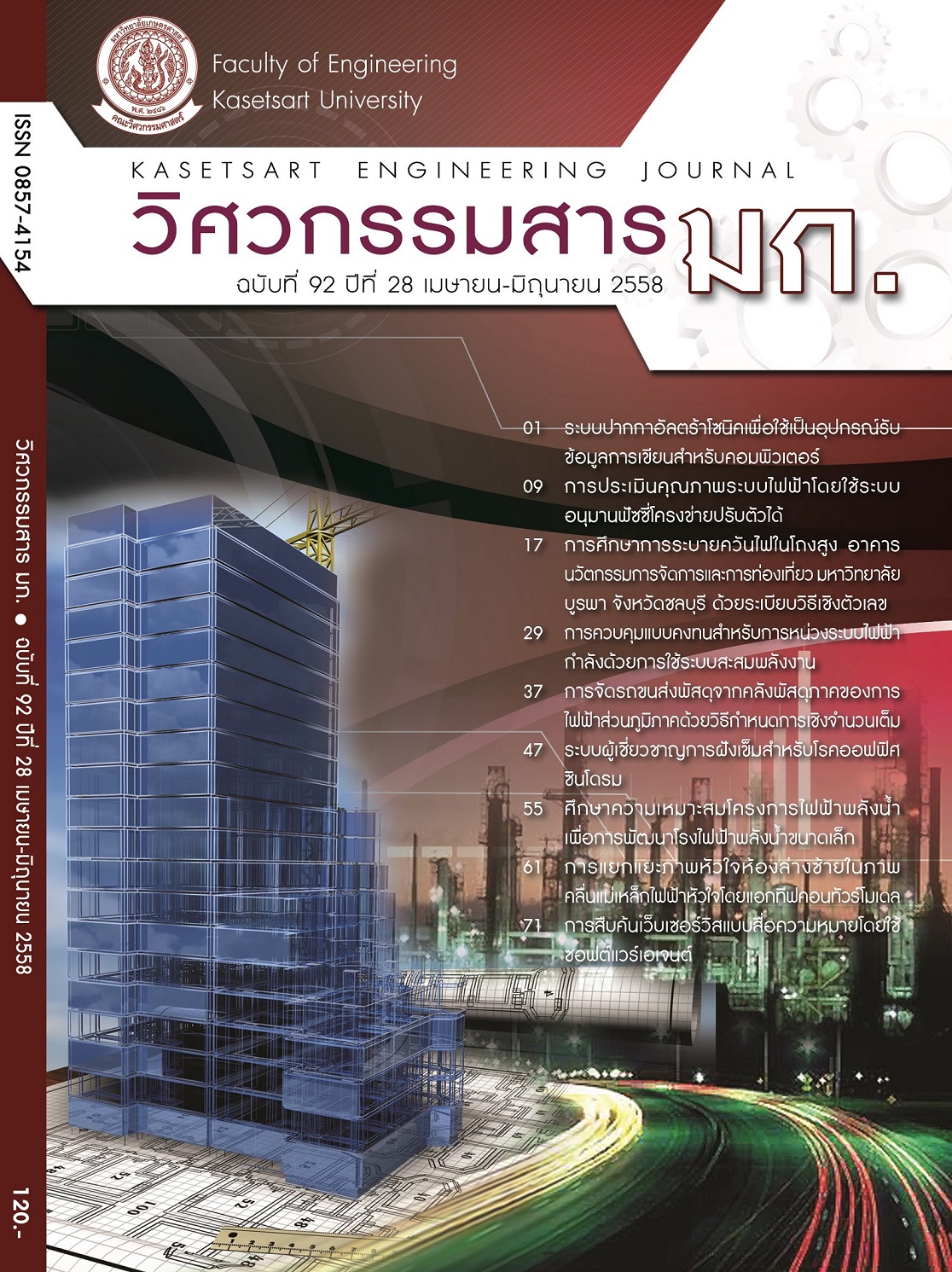การประเมินคุณภาพระบบไฟฟ้า โดยใช้ระบบอนุมานฟัซซี่โครงข่ายปรับตัวได้
Keywords:
คุณภาพไฟฟ้า, ความเชื่อถือได้ทางไฟฟ้า, โครงข่ายประสาทเทียม, ระบบอนุมานฟัซซี่โครงข่ายปรับตัวได้, power quality, reliability, artificial neural networks, adaptive neuro-fuzzy inference systemsAbstract
บทความนี้นำเสนอวิธีการประเมินคุณภาพระบบไฟฟ้ากำลัง โดยนำความเชื่อถือได้ทางไฟฟ้า และคุณภาพไฟฟ้าของระบบจำหน่ายมาวิเคราะห์ร่วมกัน ด้วยวิธีการ Adaptive Neuro-Fuzzy Inference Systems (ANFIS) ซึ่งมีรูปร่างคล้ายคลึงกับโครงข่ายประสาทเทียม (ANN) รวมกันกับระบบอนุมานฟัซซี่ (FIS) ใช้กระบวนการเรียนรู้แบบลูกผสม (Hybrid) โดยกำหนดให้ดัชนีความเชื่อถือได้ทางไฟฟ้าเป็นอินพุต และดัชนีคุณภาพไฟฟ้าเป็นเอาท์พุตของ ANFIS ซึ่งดัชนีคุณภาพไฟฟ้าที่เลือกใช้คือ SARFI90 และ SARFI110 ซึ่งเป็นจำนวนครั้งเฉลี่ยที่เกิดแรงดันไฟฟ้าตก และแรงดันไฟฟ้าเกินตามลำดับ เพื่อใช้สำหรับประเมินคุณภาพระบบไฟฟ้ากำลัง และผลที่ได้มีการเปรียบเทียบกับโครงข่ายประสาทเทียม ซึ่งโครงข่ายประสาทเทียมที่เลือกใช้เป็นแบบมีหลายชั้น ชนิดการเรียนรู้ที่มีการแพร่ค่าย้อนกลับ ซึ่งวิธีการ ANFIS ให้ผลการจำลองเป็นที่น่าพอใจและดีกว่าโครงข่ายประสาทเทียมทั้งค่าความผิดพลาด และเวลาที่ใช้ในการเรียนรู้
Power System Quality Evaluation Using Adaptive Neuro-Fuzzy Inference Systems
This paper describes an approach to evaluate the power quality by means of Adaptive Neuro-Fuzzy Inference Systems (ANFIS) of which reliability and distribution system quality are taken account. The ANFIS is regarded as the hybrid configuration which is developed from integration of together Artificial Neural Network (ANN) and Fuzzy Inference Systems (FIS) technique. Herein, the reliability index is applied to be the ANFIS input, and the gotten outputs are SARFI90 and SARFI110. The SARFI90 and SARFI110 indexes indicate the average amounts of voltage sag and voltage swell occurring to power system respectively, which both of the said outputs are subsequently brought to determine the quality index result. Finally, the ANFIS’s result comparing to ANN’s, illustrated in this paper, shows that the ANFIS technique has been proved it satisfies the final result more than using the ANN technique, both of error and training time.


